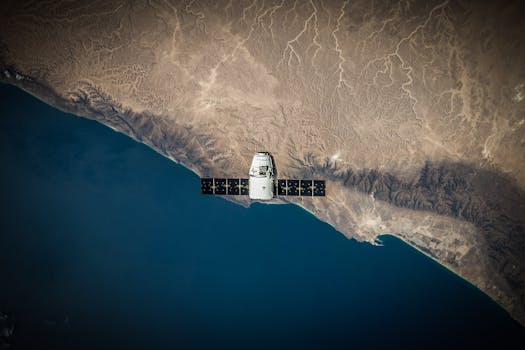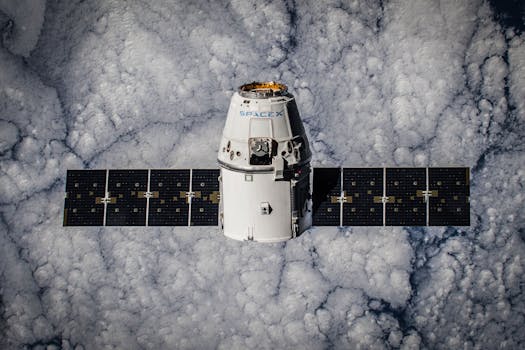
GEO Satellites: Understanding the Role of Geostationary Satellites in Modern Communication
GEO satellites, or geostationary satellites, are a type of satellite that orbits the Earth at an altitude of approximately 36,000 kilometers, remaining stationary relative to a fixed point on the Earth’s surface. This unique characteristic allows GEO satellites to provide a wide range of services, including television broadcasting, telecommunications, and weather forecasting, to a specific region or country. In this article, we will delve into the world of GEO satellites, exploring their history, functionality, and applications in modern communication.
GEO satellites have been in operation for over five decades, with the first geostationary satellite, Syncom 2, launched by NASA in 1963. Since then, the number of GEO satellites has grown exponentially, with over 500 satellites currently in orbit around the Earth. These satellites are used by a variety of organizations, including government agencies, telecommunications companies, and television broadcasters, to provide a range of services to users around the world.
How GEO Satellites Work

GEO satellites work by transmitting and receiving signals to and from Earth-based stations. The satellite receives a signal from an Earth-based station, amplifies it, and then re-transmits it back to Earth, where it is received by another station. This process allows GEO satellites to provide a wide range of services, including television broadcasting, telecommunications, and data transmission. The signals transmitted by GEO satellites are typically in the C-band, Ku-band, or Ka-band frequency ranges, which are allocated by the International Telecommunication Union (ITU) for satellite communication.
The functionality of GEO satellites is made possible by their unique orbit. By orbiting the Earth at an altitude of approximately 36,000 kilometers, GEO satellites remain stationary relative to a fixed point on the Earth’s surface. This allows them to provide continuous coverage to a specific region or country, without the need for complex tracking systems. The orbit of a GEO satellite is also synchronized with the Earth’s rotation, which means that the satellite completes one orbit around the Earth in exactly 24 hours, allowing it to maintain a fixed position in the sky.
Applications of GEO Satellites

GEO satellites have a wide range of applications in modern communication. One of the most common uses of GEO satellites is for television broadcasting. Many television channels, including news, sports, and entertainment channels, are broadcast via GEO satellites, allowing them to reach a wide audience across the globe. GEO satellites are also used for telecommunications, providing voice and data services to users in remote or underserved areas. In addition, GEO satellites are used for weather forecasting, allowing meteorologists to track weather patterns and predict storms and other severe weather events.
In addition to these applications, GEO satellites are also used for a variety of other purposes, including navigation, scientific research, and military communications. The Global Positioning System (GPS), for example, relies on a network of GEO satellites to provide location information to users around the world. Scientific researchers also use GEO satellites to study the Earth’s climate, oceans, and land surfaces, while military organizations use them for communications and surveillance.
Challenges and Limitations of GEO Satellites

Despite their many advantages, GEO satellites also have some challenges and limitations. One of the main limitations of GEO satellites is their high latency, which can range from 250 to 300 milliseconds. This latency is due to the distance between the Earth and the satellite, and can make real-time communication difficult. GEO satellites are also susceptible to interference from other satellites and terrestrial systems, which can affect their performance and reliability.
In addition, the launch and operation of GEO satellites are complex and expensive. Launching a GEO satellite into orbit requires a powerful rocket, and the satellite must be designed to withstand the harsh conditions of space. The operation of a GEO satellite also requires a significant amount of power, which is typically generated by solar panels or nuclear reactors. The cost of launching and operating a GEO satellite can be tens or even hundreds of millions of dollars, making them a significant investment for organizations and governments.
Another challenge facing GEO satellites is the increasing congestion in the geostationary orbit. With over 500 satellites currently in orbit, the geostationary orbit is becoming increasingly crowded, which can lead to interference and collisions between satellites. To mitigate this problem, satellite operators and regulators are working to develop new technologies and regulations to manage the geostationary orbit and prevent collisions.
Future of GEO Satellites

Despite these challenges, the future of GEO satellites looks bright. Advances in technology are making it possible to build smaller, more efficient, and more powerful satellites, which will enable new applications and services. The development of new propulsion systems, such as electric propulsion, will also make it possible to extend the life of GEO satellites and reduce their operating costs. In addition, the increasing demand for satellite-based services, such as broadband internet and television broadcasting, will drive the growth of the GEO satellite market in the coming years.
In conclusion, GEO satellites play a crucial role in modern communication, providing a wide range of services including television broadcasting, telecommunications, and weather forecasting. While they have some challenges and limitations, the benefits of GEO satellites make them an essential part of our global communication infrastructure. As technology continues to advance, we can expect to see new and innovative applications of GEO satellites, which will further expand their role in modern communication.
See more:




